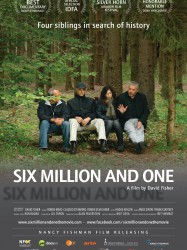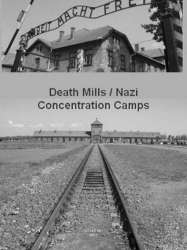Speak It! From the Heart of Black Nova Scotia est un film canadien de genre Documentaire
Speak It! From the Heart of Black Nova Scotia (1992)

Si vous aimez ce film, faites-le savoir !
- Infos
- Casting
- Infos techniques
- Photos
- Vidéos
- Passages TV
- Citations
- Personnages
- Musique
- Récompenses
Speak It! From the Heart of Black Nova Scotia is a 1992 documentary film by Sylvia Hamilton, focusing on a group of Black Nova Scotian students in a predominantly white high school in Halifax, Nova Scotia who face daily reminders of racism. These students work to build pride and self-esteem through educational and cultural programs, discovering their heritage and learning ways to effect change. Produced by the National Film Board of Canada, this 28-minute documentary received the Canada Award at the 1994 Gemini Awards from the Academy of Canadian Cinema and Television, as well as the 1994 Maeda Prize from NHK.
Bande annonce de Speak It! From the Heart of Black Nova Scotia
Bluray, DVD
Streaming / VOD
Commentaires
Postez un commentaire :
Suggestions de films similaires à Speak It! From the Heart of Black Nova Scotia
Il y a 8963 ayant les mêmes genres cinématographiques, 3221 films qui ont les mêmes thèmes (dont 195 films qui ont les mêmes 4 thèmes que Speak It! From the Heart of Black Nova Scotia), pour avoir au final 70 suggestions de films similaires.Si vous avez aimé Speak It! From the Heart of Black Nova Scotia, vous aimerez sûrement les films similaires suivants :

Nine from Little Rock (1964)
, 20minutesRéalisé par Charles Guggenheim
Origine Etats-Unis
Genres Documentaire
Thèmes Le racisme, Documentaire sur la discrimination, Documentaire sur le droit, Documentaire historique, Documentaire sur une personnalité, Documentaire sur la politique, Politique
Acteurs Thomas Jefferson
Note68%





Le film raconte l'histoire de neuf étudiants afro-américains, connus sous le nom des Neuf de Little Rock, les premiers à tenter d'entrer dans le lycée central de Little Rock en Arkansas en 1957. Il était jusque-là exclusivement réservé aux Blancs.

Fotoamator (1998)
, 52minutesRéalisé par Dariusz Jabłoński
Genres Guerre, Documentaire, Historique
Thèmes Le racisme, Religion, Documentaire sur la discrimination, Documentaire sur le droit, Documentaire sur la guerre, Documentaire historique, Documentaire sur une personnalité, Documentaire sur la religion, Politique, Religion juive, Documentaire sur la Seconde Guerre mondiale
Acteurs Artur Brauner
Note72%






Ihr zent frei (1983)
, 20minutesGenres Documentaire
Thèmes Le racisme, Religion, Documentaire sur la discrimination, Documentaire sur le droit, Documentaire sur la guerre, Documentaire historique, Documentaire sur une personnalité, Documentaire sur la religion, Politique, Religion juive, Documentaire sur la Seconde Guerre mondiale
Note67%





 , 1h33
, 1h33Origine Allemagne
Genres Documentaire, Historique
Thèmes Le racisme, Documentaire sur la discrimination, Documentaire sur le droit, Documentaire sur la guerre, Documentaire historique, Documentaire sur une personnalité, Politique
Acteurs Martina Gedeck, Sylvester Groth, Joachim Król, Sandra Hüller, Hanns Zischler, Burghart Klaußner
Note68%





Aghet, se traduisant par « catastrophe » en arménien, est le mot utilisé pour désigner le massacre de plus d'un million d'Arméniens de l'Empire ottoman de 1915 à 1917. Le documentaire débute en évoquant le meurtre du journaliste Hrant Dink pour continuer sur le refus de la Turquie de reconnaître le génocide, les déclarations du premier ministre turc Recep Tayyip Erdogan ou encore le refus d'intervention du gouvernement impérial de l'Allemagne à l'époque, préfiguration d'un autre génocide, celui de la Shoah.

L'Image manquante (2013)
, 1h32Réalisé par Rithy Panh
Origine France
Genres Guerre, Documentaire, Historique, Animation
Thèmes Politique, Le racisme, Documentaire sur la discrimination, Documentaire sur le droit, Documentaire sur la guerre, Documentaire historique, Documentaire sur une personnalité, Politique, Documentaire autobiographique
Acteurs Randal Douc, Jean-Baptiste Phou, Rithy Panh
Note72%





En utilisant des figurines d'argile et des images d'archive, Rithy Panh témoigne des atrocités commises par les Khmers rouges au Cambodge entre 1975 et 1979.

Hearts of Hate (1995)
Réalisé par Peter Raymont
Origine Canada
Genres Documentaire
Thèmes Le racisme, Documentaire sur la discrimination, Documentaire sur le droit, Documentaire sur une personnalité

Six Million and One (2012)
, 1h33Genres Documentaire
Thèmes Le racisme, Religion, Documentaire sur la discrimination, Documentaire sur le droit, Documentaire sur la guerre, Documentaire historique, Documentaire sur une personnalité, Documentaire sur la religion, Politique, Religion juive, Documentaire sur la Seconde Guerre mondiale
Note66%





Joseph Fischer's memoir was discovered only after his death. His children refused to confront it, except for David, the filmmaker, for whom it became a compass for a long journey. When David found it unbearable to be alone in the wake of his father's survival story and in his struggle not to lose his sanity, he convinced his brothers and sister to join him in the hope that this would also contribute to releasing tensions and bring them as close as they used to be. His siblings, for their part, couldn’t understand why anyone should want to dig into the past instead of enjoying life in the present. The journey eventually leads the Fishers into the dark depths of the B8 Bergkristall tunnels, part of the Austrian KZ Gusen II concentration camp, where their father endured forced labor during the Holocaust. Illuminated only by flashlights, they seek meaning in their personal and family histories and undergo surgical and revealing discussions about family, survival and individualism only to come to the realization that they are unable to fully understand their father's past and the events that haunted him. Joseph Fischer's last couple of weeks at Gunskirchen concentration camp, were an inhuman experience that blocked his writing. In order to find out what his father failed to describe about Gunskirchen's liberation David located veterans of the 71st Infantry Division who liberated the camp. The elderly soldiers are still haunted and traumatized by the horrific sights they came across when entering the camp. Through their journey, the Fishers become emblematic of the entire second generation who are still grappling with the experience of their survivor parents.

Too Colourful for the League (2001)
, 52minutesOrigine Canada
Genres Documentaire
Thèmes Le racisme, Sport, Documentaire sur le sport, Hockey sur glace, Documentaire sur la discrimination, Documentaire sur le droit, Documentaire sur une personnalité
Note63%






Death Mills (1945)
, 22minutesRéalisé par Billy Wilder
Origine Etats-Unis
Genres Guerre, Documentaire
Thèmes Le racisme, Religion, Documentaire sur la discrimination, Documentaire sur le droit, Documentaire sur la guerre, Documentaire historique, Documentaire sur une personnalité, Documentaire sur la religion, Politique, Religion juive, Documentaire sur la Seconde Guerre mondiale
Note74%





Le film fut à l’origine tourné avec une bande son en allemand pour être projeté dans l’Allemagne et l’Autriche occupées. Il s’agit du premier documentaire montrant ce que les Alliés découvrirent lorsqu’ils libérèrent les camps d’extermination nazi : les survivants, les conditions de vie, et la preuve d’un génocide. Le film fait état des aspects économiques de l’opération des camps. Des membres du personnel de ceux-ci, faits prisonniers, y sont interrogés. Et l’on y voit la visite forcée des habitants de villes voisines qui, de même que leurs compatriotes, sont accusés de complicité dans les crimes nazi – c’est l’une des rares condamnations de cette sorte enregistrées dans les archives alliées de la Seconde Guerre mondiale. Au même moment Samuel Fuller tournait son premier film amateur au camp de Falkenau, mais ces images ne seront visibles qu'en 1988, incluses dans Falkenau, vision de l’impossible, documentaire d’Emil Weiss.

Days of Waiting (1991)
, 28minutesOrigine Etats-Unis
Genres Documentaire
Thèmes La prison, Le racisme, Documentaire sur l'art, Documentaire sur la discrimination, Documentaire sur le droit, Documentaire sur la guerre, Documentaire historique, Documentaire sur une personnalité, Politique, Documentaire sur la Seconde Guerre mondiale
Note73%





Le film est consacré à Estelle Ishigo (1899-1990), une artiste qui est allée volontairement dans un camp d'internement pour japonais lors de la Seconde Guerre mondiale.
 Connexion
Connexion